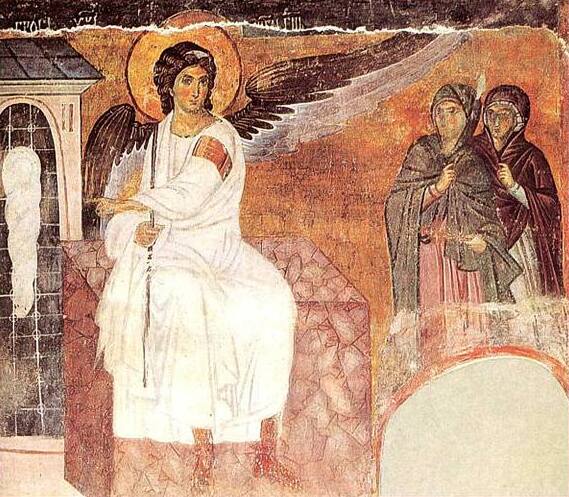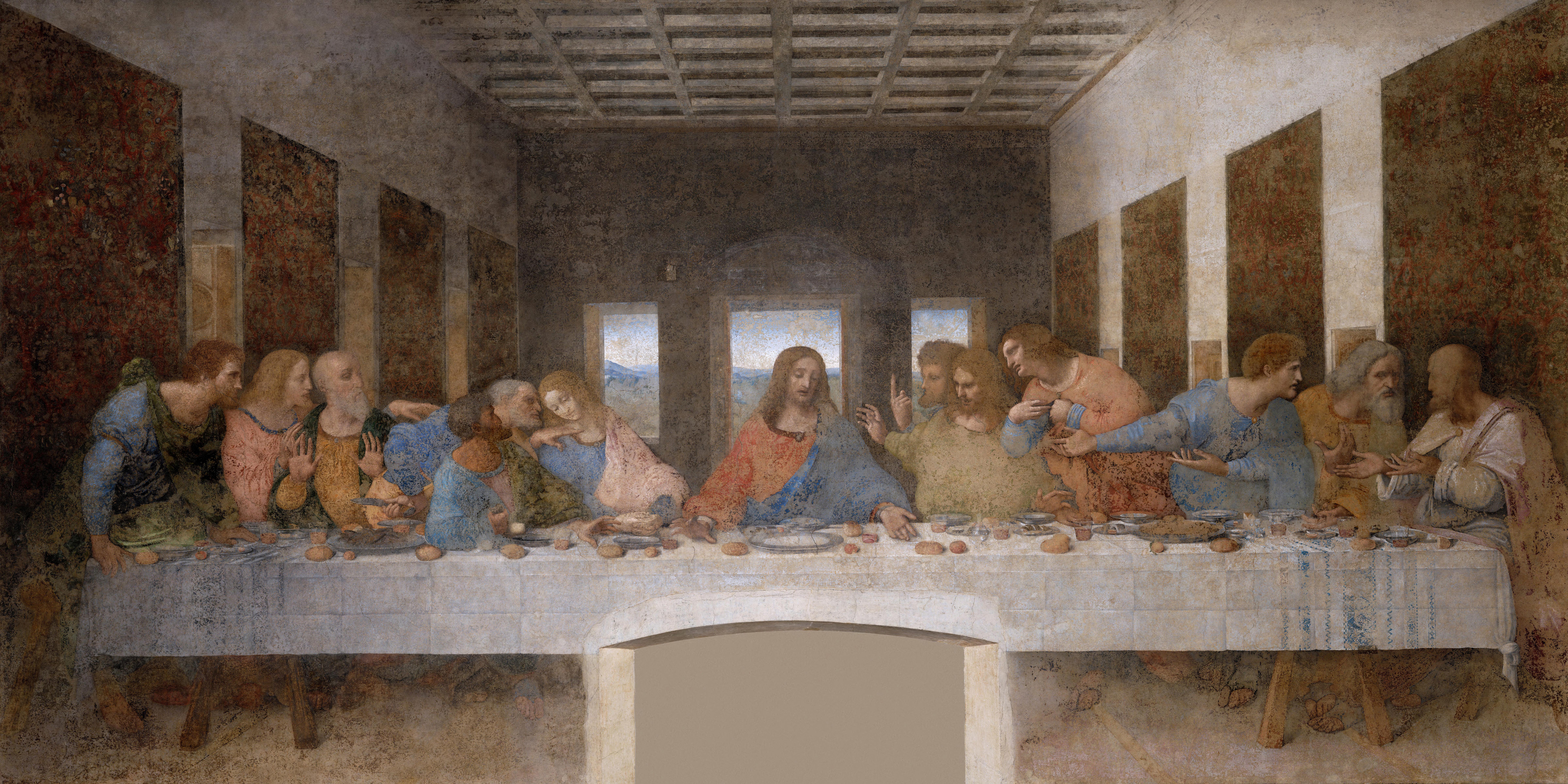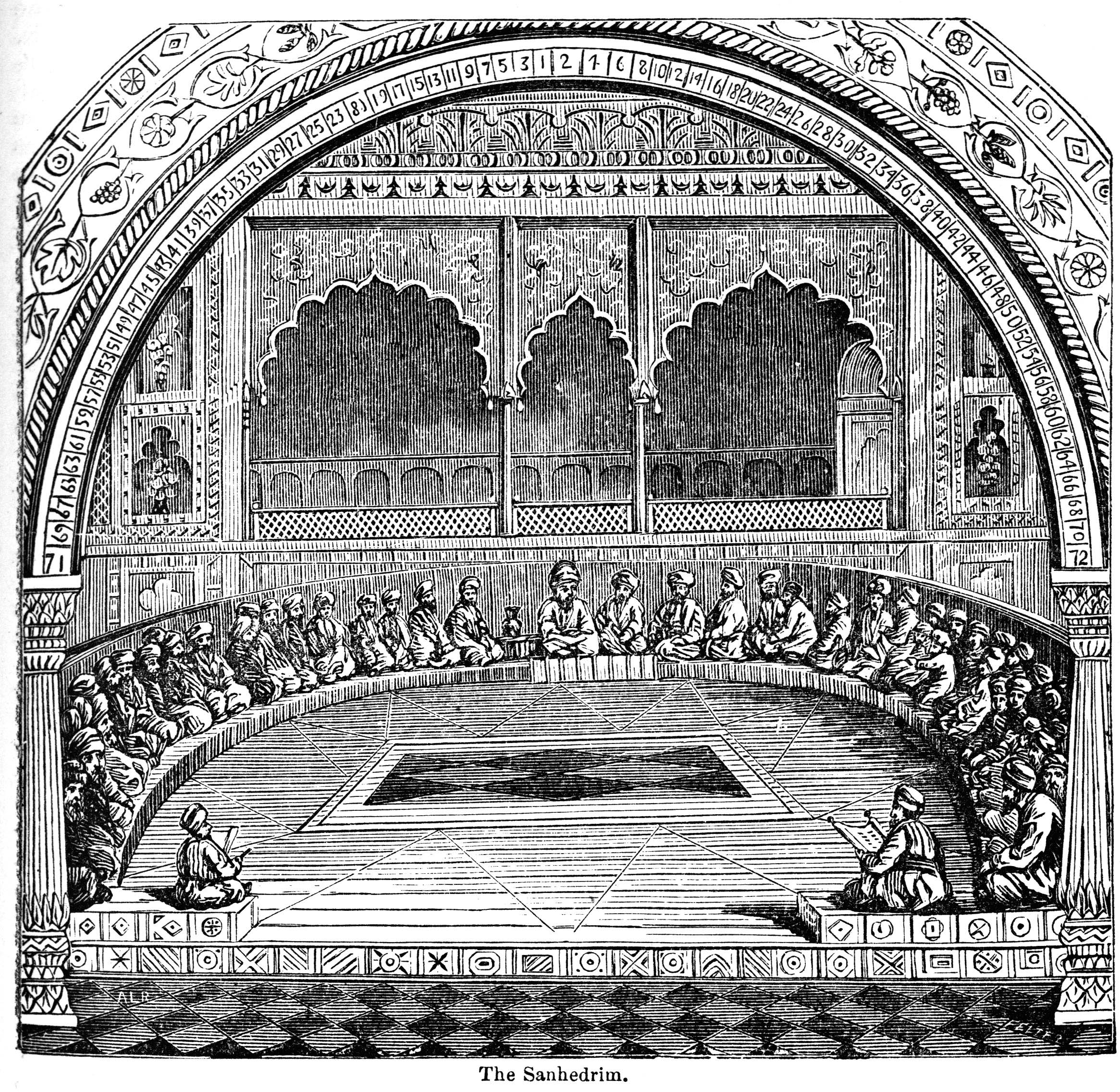|
Myrrhbearers
In Eastern Orthodox Christian tradition the Myrrhbearers (Greek: Μυροφόροι; Latin: ''Myrophorae''; Slavonic: Жены́-мѷроно́сицы; ro, mironosiţe) are the individuals mentioned in the New Testament who were directly involved in the burial or who discovered the empty tomb following the resurrection of Jesus. The term traditionally refers to the women with myrrh who came to the tomb of Christ early in the morning to find it empty. In Western Christianity, the two women at the tomb, the Three Marys or other variants are the terms normally used. Also included are Joseph of Arimathea and Nicodemus, who took the body of Jesus down from the cross, embalmed it with myrrh and aloes, wrapped it in clean linen, and placed it in a new tomb. (, , , , ). The women followed Jesus during his earthly ministry in Galilee, providing for him and his followers out of their own means (). They remained faithful to him even during the most dangerous time of his arrest and exec ... [...More Info...] [...Related Items...] OR: [Wikipedia] [Google] [Baidu] |
The Three Marys
The Three Marys (also spelled Maries) are women mentioned in the canonical gospels' narratives of the crucifixion and resurrection of Jesus, several of whom were, or have been considered by Christian tradition, to have been named Mary (the most common name for Jewish women of the period). The Gospels give the name Mary to several individuals. At various points of Christian history, some of these women have been identified with one another. * Mary, mother of Jesus * Mary Magdalene * Mary of Jacob (mother of James the Less) (; ; ) * Mary of Clopas (), sometimes identified with Mary of Jacob * Mary of Bethany (, ), not mentioned in any Crucifixion or Resurrection narratives but identified with Mary Magdalene in some traditions. Another woman who appears in the Crucifixion and Resurrection narratives is Salome, who, in some traditions, is identified as being one of the Marys, notwithstanding having a different name. In such cases, she is referred to as Mary Salome. Other women me ... [...More Info...] [...Related Items...] OR: [Wikipedia] [Google] [Baidu] |
Mary Magdalene
Mary Magdalene (sometimes called Mary of Magdala, or simply the Magdalene or the Madeleine) was a woman who, according to the four canonical gospels, traveled with Jesus as one of his followers and was a witness to his crucifixion and resurrection. She is mentioned by name twelve times in the canonical gospels, more than most of the apostles and more than any other woman in the gospels, other than Jesus' family. Mary's epithet ''Magdalene'' may mean that she came from the town of Magdala, a fishing town on the western shore of the Sea of Galilee in Roman Judea. The Gospel of Luke chapter 8 lists Mary Magdalene as one of the women who traveled with Jesus and helped support his ministry "out of their resources", indicating that she was probably wealthy. The same passage also states that seven demons had been driven out of her, a statement which is repeated in Mark 16. In all the four canonical gospels, Mary Magdalene was a witness to the crucifixion of Jesus and, in the Syn ... [...More Info...] [...Related Items...] OR: [Wikipedia] [Google] [Baidu] |
Nicodemus
Nicodemus (; grc-gre, Νικόδημος, Nikódēmos) was a Pharisee and a member of the Sanhedrin mentioned in three places in the Gospel of John: * He first visits Jesus one night to discuss Jesus' teachings (). * The second time Nicodemus is mentioned, he reminds his colleagues in the Sanhedrin that the law requires that a person be heard before being judged (). * Finally, Nicodemus appears after the Crucifixion of Jesus to provide the customary embalming spices, and assists Joseph of Arimathea in preparing the body of Jesus for burial (). An apocryphal work under his name—the Gospel of Nicodemus—was produced in the mid-4th century, and is mostly a reworking of the earlier Acts of Pilate, which recounts the Harrowing of Hell. Although there is no clear source of information about Nicodemus outside the Gospel of John, Ochser and Kohler (in an article in ''The Jewish Encyclopedia'') and some historians have speculated that he could be identical to Nicodemus ben Gur ... [...More Info...] [...Related Items...] OR: [Wikipedia] [Google] [Baidu] |
Joseph Of Arimathea
Joseph of Arimathea was, according to all four canonical gospels, the man who assumed responsibility for the burial of Jesus after his crucifixion. The historical location of Arimathea is uncertain, although it has been identified with several towns. A number of stories that developed during the Middle Ages connect him with Glastonbury, England and also with the Holy Grail legend. Gospel narratives describes him simply as a rich man and disciple of Jesus, but according to Joseph of Arimathea was "a respected member of the council, who was also himself looking for the kingdom of God"; adds that he "had not consented to their decision and action". According to , upon hearing of Jesus' death, this secret disciple of Jesus "asked Pilate that he might take away the body of Jesus, and Pilate gave him permission." Joseph immediately purchased a linen shroud () and proceeded to Golgotha to take the body of Jesus down from the cross. There, according to , Joseph and Nicodemus ... [...More Info...] [...Related Items...] OR: [Wikipedia] [Google] [Baidu] |
Resurrection Of Jesus
The resurrection of Jesus ( grc-x-biblical, ἀνάστασις τοῦ Ἰησοῦ) is the Christian belief that God raised Jesus on the third day after his crucifixion, starting – or restoring – his exalted life as Christ and Lord. According to the New Testament writing, Jesus was firstborn from the dead, ushering in the Kingdom of God. He appeared to his disciples, calling the apostles to the Great Commission of forgiving sin and baptizing repenters, and ascended to Heaven. For the Christian tradition, the bodily resurrection was the restoration to life of a transformed body powered by spirit, as described by Paul and the Gospel authors, that led to the establishment of Christianity. In Christian theology, the resurrection of Jesus is "the central mystery of the Christian faith". It provides the foundation for that faith, as commemorated by Easter, along with Jesus' life, death and sayings. For Christians, his resurrection is the guarantee that all the Chr ... [...More Info...] [...Related Items...] OR: [Wikipedia] [Google] [Baidu] |
Empty Tomb
The empty tomb is the Christian tradition that the tomb of Jesus was found empty on the third day after his crucifixion. All four gospels relay the story, but beyond a basic outline, they agree on little. In the original ending of the Gospel of Mark, the oldest, three women visit the tomb to anoint the body of Jesus, but find instead a "young man" who tells them that Jesus will meet the disciples in Galilee. The women then flee, telling no one. Matthew introduces guards and a curious doublet where the women are told twice, by angels and then by Jesus, that he will meet the disciples in Galilee. Luke changes Mark's one "young man" to two, adds Peter's inspection of the tomb, and deletes the promise that Jesus would meet his disciples in Galilee. John reduces the women to the solitary Mary Magdalene and introduces the " beloved disciple" who visits the tomb with Peter and who is the first to understand its significance. Gospel accounts Overview Although the four cano ... [...More Info...] [...Related Items...] OR: [Wikipedia] [Google] [Baidu] |
Apostles In The New Testament
In Christian theology and ecclesiology, the apostles, particularly the Twelve Apostles (also known as the Twelve Disciples or simply the Twelve), were the primary disciples of Jesus according to the New Testament. During the life and ministry of Jesus in the 1st century AD, the apostles were his closest followers and became the primary teachers of the gospel message of Jesus. There is also an Eastern Christian tradition derived from the Gospel of Luke of there having been as many as seventy apostles during the time of Jesus' ministry. The commissioning of the Twelve Apostles during the ministry of Jesus is described in the Synoptic Gospels. After his resurrection, Jesus sent eleven of them (as Judas Iscariot by then had died) by the Great Commission to spread his teachings to all nations. This event has been called the dispersion of the Apostles. In the Pauline epistles, Paul, although not one of the original twelve, described himself as an apostle, saying he wa ... [...More Info...] [...Related Items...] OR: [Wikipedia] [Google] [Baidu] |
Pontius Pilate
Pontius Pilate (; grc-gre, Πόντιος Πιλᾶτος, ) was the fifth governor of the Roman province of Judaea, serving under Emperor Tiberius from 26/27 to 36/37 AD. He is best known for being the official who presided over the trial of Jesus and ultimately ordered his crucifixion. Pilate's importance in modern Christianity is underscored by his prominent place in both the Apostles' and Nicene Creeds. Due to the Gospels' portrayal of Pilate as reluctant to execute Jesus, the Ethiopian Church believes that Pilate became a Christian and venerates him as both a martyr and a saint, a belief which is historically shared by the Coptic Church. Although Pilate is the best-attested governor of Judaea, few sources regarding his rule have survived. Nothing is known about his life before he became governor of Judaea, and nothing is known about the circumstances that led to his appointment to the governorship. Coins that he minted have survived from Pilate's governorship, as we ... [...More Info...] [...Related Items...] OR: [Wikipedia] [Google] [Baidu] |
Galilee
Galilee (; he, הַגָּלִיל, hagGālīl; ar, الجليل, al-jalīl) is a region located in northern Israel and southern Lebanon. Galilee traditionally refers to the mountainous part, divided into Upper Galilee (, ; , ) and Lower Galilee (, ; , ). ''Galilee'' refers to all of the area that is north of the Mount Carmel- Mount Gilboa ridge and south of the east–west section of the Litani River. It extends from the Israeli coastal plain and the shores of the Mediterranean Sea with Acre in the west, to the Jordan Rift Valley to the east; and from the Litani in the north plus a piece bordering on the Golan Heights all the way to Dan at the base of Mount Hermon in the northeast, to Mount Carmel and Mount Gilboa in the south. This definition includes the plains of the Jezreel Valley north of Jenin and the Beth Shean Valley, the valley containing the Sea of Galilee, and the Hula Valley, although it usually does not include Haifa's immediate northern suburbs. By th ... [...More Info...] [...Related Items...] OR: [Wikipedia] [Google] [Baidu] |
Arimathea
Arimathea ( grc-gre, ‘Αριμαθέα) or Harimathaea (, ''Harimathaía'') was a city of Judea. It was the reported home of Joseph of Arimathea, who appears in all four Gospel accounts of the Passion for having donated his new tomb outside Jerusalem to receive the body of Jesus. Identification Roman era The historian Eusebius of Caesarea, in his '' Onomasticon'' (144:28-29), identified it with Ramathaim-Zophim and wrote that it was near Diospolis (now Lod). Ramathaim-Zophim was a town in Ephraim, the birthplace of Samuel, where David came to him (First Book of Samuel, ). He briefly describes it as follows: Armthem Seipha (Sofim). City of Elcana and Samuel. It is situated (in the region of Thamna) near Diospolis. The home of Joseph who was from Arimathea in the Gospels. Scholars of the Onomasticon have identified the Greek Arimathea as deriving from the ancient Hebrew place name transliterated into Greek, as the older Hebrew place name "Ramathaim Sophim" attested in the Hebrew ... [...More Info...] [...Related Items...] OR: [Wikipedia] [Google] [Baidu] |
Sanhedrin
The Sanhedrin (Hebrew and Aramaic: סַנְהֶדְרִין; Greek: , '' synedrion'', 'sitting together,' hence 'assembly' or 'council') was an assembly of either 23 or 71 elders (known as "rabbis" after the destruction of the Second Temple), appointed to sit as a tribunal in every city in the ancient Land of Israel. There were two classes of Rabbinite Jewish courts which were called Sanhedrin, the Great Sanhedrin and the Lesser Sanhedrin. A lesser Sanhedrin of 23 judges was appointed to sit as a tribunal in each city, but there was only supposed to be one Great Sanhedrin of 71 judges, which among other roles acted as the Supreme Court, taking appeals from cases which were decided by lesser courts. In general usage, ''the Sanhedrin'' without qualifier normally refers to the Great Sanhedrin, which was presided over by the '' Nasi'', who functioned as its head or representing president, and was a member of the court; the '' Av Beit Din'' or the chief of the court, who was seco ... [...More Info...] [...Related Items...] OR: [Wikipedia] [Google] [Baidu] |









